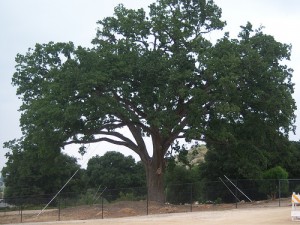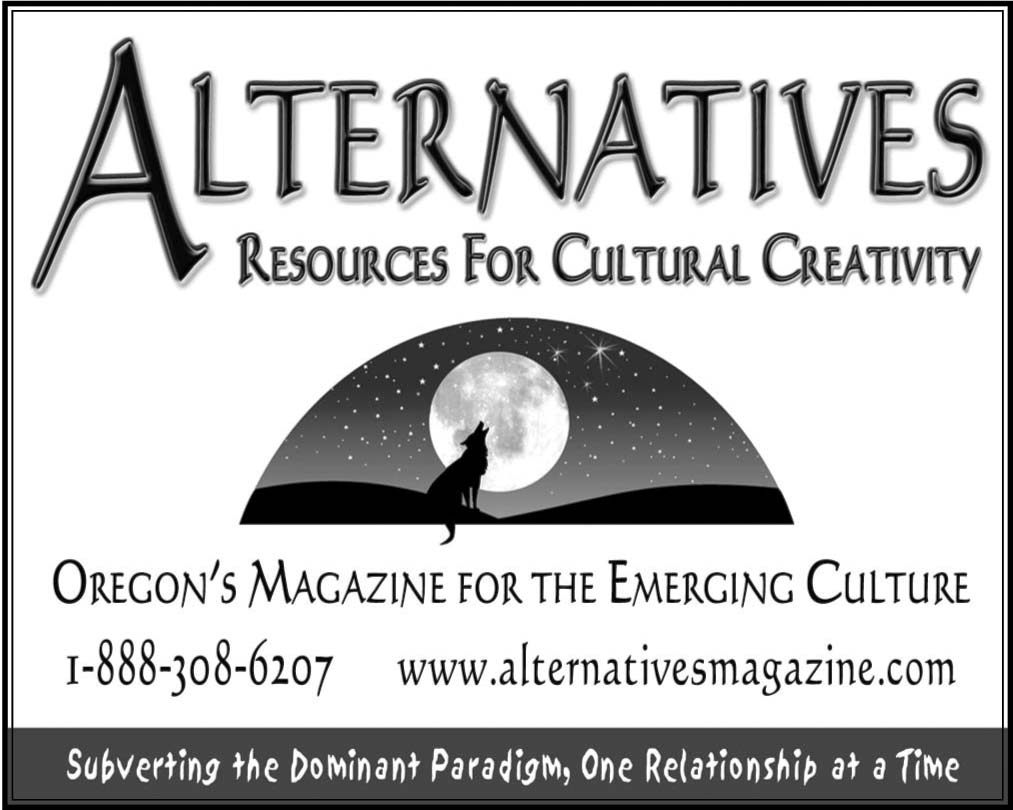 by William James Gibson
by William James Gibson
Like Special Forces commandos, the L.A. County Sheriff’s deputies and firefighters came at 2 a.m., Jan. 10, 2002, when they knew their enemy would be asleep. After a 71-day siege, the lone warrior knew the end was coming and chained himself into place for one last stand. Mesmerized, the public watched the arrest of a tree-sitter, who was charged with trespassing.
For just over two months, 42-year-old John Quigley, a well-known local environmentalist, had lived amid the boughs of a 400-year-old oak tree, trying to save it from a developer’s bulldozer. The oak stood at the entrance to a new subdivision of several hundred homes in the Santa Clarita Valley, north of Los Angeles. The Los Angeles County Board of Supervisors had ruled that the tree had to go because it blocked the planned expansion of a two-lane road into a four-lane thoroughfare.
The media loved the story. Parents brought their children to bear witness. Native American groups drummed and danced in solidarity. As posters, poems and tributes collected at its base, the oak started to resemble a monument or memorial.
To millions living in the suburban sprawl of Southern California, the grand old oak had become far more than a tree — it had become a symbol of all the other trees, animal life and open spaces lost to development.
Desires for Place
and the Animal Other
Through the 1990s and early 2000s, a new and striking kind of yearning was evident in the ways ordinary people felt and talked about nature. People were touched by stories of bears who befriended humans, enthralled by the fluid grace of whales, moved to the depths of their souls by majestic trees, newly alive to the sense of mystery, of a world larger than themselves. Some suburban residents came to feel deeply connected to the few remaining open spaces — slivers of forest, wetland, meadow — around them, dedicating years to trying to save them from development. Others restored degraded places such as polluted wetlands and rivers. People began speaking up for the dignity of ordinary domestic animals such as cows and pigs.
How are we to understand this upsurge of feeling? As Karl Marx and Friedrich Engels observed in The Communist Manifesto, the modern world was built largely through “the subjection of Nature’s forces to man.” This subjection was so complete it eclipsed humankind’s past and, with it, the traditional unity between humans and the rest of creation that is typical of pre-modern societies. Among Native American tribes, for example, animal species were, like other tribes, deemed “nations,” such as the buffalo nation or beaver nation.
The pre-modern cosmos possessed a kind of enchantment. Humans were never alone: The crane flying overhead, the ground beneath one’s feet, the great oak tree near the creek, the creek itself, could all be addressed as kin by those who knew the right words and rituals. Modernity, as has been widely noted, drained the cosmos of that magic. Yet, the idea of the human world as separate from the rest of nature never gained complete acceptance.
A Rapidly Dying World
The current wave of spiritual interest in nature is not simply another outburst of romanticism. For one thing, it is fueled by a new sense of urgency. Global warming looms ominously, with the climate changing faster than anything seen since the end of the last ice age some 10,000 years ago. The rapid rise in temperature is endangering countless animals. People converted more forests and prairies to cropland from 1950 to 1980 than in the century and a half between 1700 and 1850. The destruction of habitat leaves animals with nowhere to go. The report’s authors conclude: “Some 12 percent of birds, 25 percent of mammals, and at least 32 percent of amphibians are threatened with extinction over the next century.”
The assessment reads like a funeral oratory.
A New Covenant Takes Shape
Funerary rhetoric marks what is irretrievably gone, but it also reveals a people’s fundamental moral values — what the deceased meant to those still living, and what their hopes are for the future. In a growing public acknowledgment of kinship, the current change in environmental thinking is much broader, deeper, and more varied than what has come before. Virtually every part of contemporary culture, from the highest realms of science to the mundane world of commercial television programming, has experienced its revolutionary influence. Already, mainstream geneticists openly discuss the idea of human-animal kinship.
The ultimate goal of this sweeping change, which I call “the culture of enchantment,” is nothing less than the reinvestment of nature with spirit. Flatly rejecting modernity’s reduction of animals, plants, places, and natural forces to either matter or utilitarian resource, the culture of enchantment attempts to make nature sacred once again.
The implications of this shift are enormous. If 400-year-old oak trees in Los Angeles can be re-enchanted, whole forests or entire mountain ranges or coastlines might come to command our love and respect. Even degraded and polluted landscapes — the kind often found in and around cities — might gain our compassion and be deemed worthy of care. In creating spiritual and moral reasons for re-conceiving man’s relationship to nature, the culture of enchantment challenges modern institutions, raising standards that few, if any, can now meet.
The momentum behind this cultural transformation suggests that anyone who cares about the Earth should take heart. It has opened people’s imaginations, and in doing so changed the political climate. The environmental movement and its allies can now shift their strategy from defense to offense. The quest for a new kinship with nature might just save us. Φ
James William Gibson, a sociologist at California State University, Long Beach, also wrote Warrior Dreams: Paramilitary Culture in Post-Vietnam America (1994) and The Perfect War: Technowar in Vietnam (1986). This essay was adapted from A Reenchanted World: The Quest for a New Kinship with Nature.
Photo: www.jameswilliamgibson.com/images/jwilliamgibson.com and http://www.flickr.com/photos/tkksummers/2497833384/

